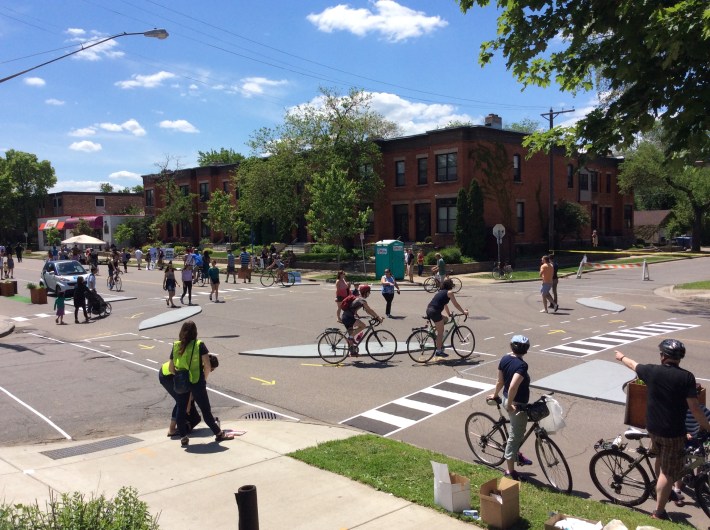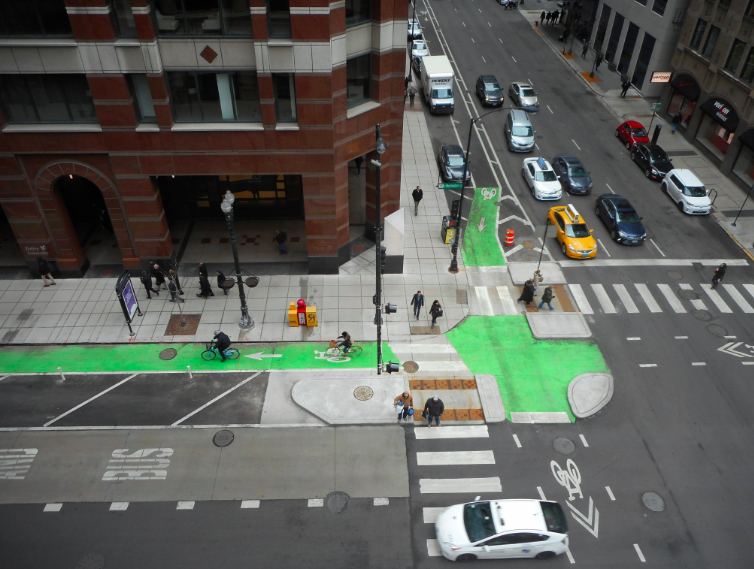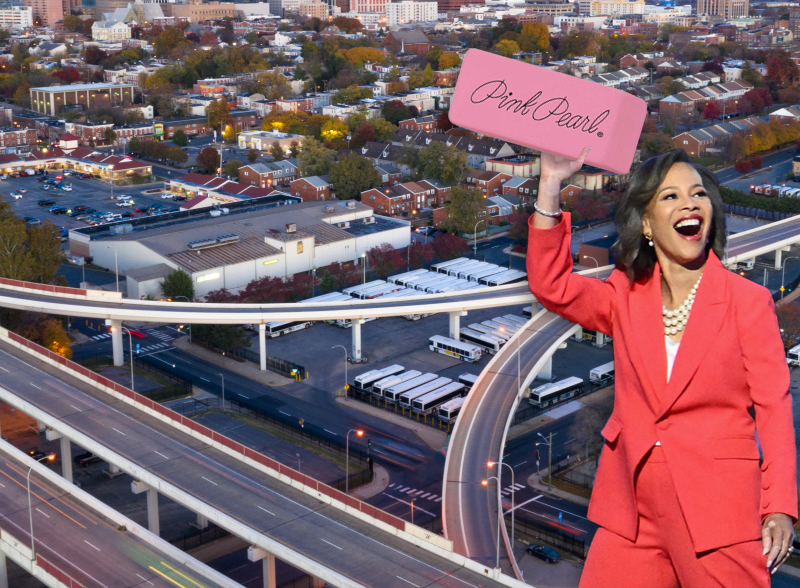If cities revamped their intersections to slow down turning vehicles and changed traffic signals to give people more time to cross lanes, they could reduce traffic crashes between cars and bikes, transportation experts say.
The amount of protected bike lane mileage has expanded 600 percent since 2011, but civic engineers and planners have not fully transformed streets at their most-dangerous spots: Nearly half of urban cycling fatalities in 2017 happened in intersections, according to the National Highway Traffic Safety Administration. In New York City, for instance, with low car ownership and scores of miles of protected bike lanes, 89 percent of fatalities and serious injuries from crashes took place in intersections.

A coalition of the continent’s transportation leaders hope to change that with a myriad of design recommendations for making safer intersections in a new report released Monday by the National Association of City Transportation Officials.
“Our cities are facing the urgent task of reducing greenhouse gas emissions from transportation, and making biking safer and more comfortable is key to a climate-positive future,” said NACTO Executive Director Corinne Kisner. “People will bike if they have safe places in which to do so. Making intersections safer is essential for creating inviting bike networks for people of all ages, backgrounds, and abilities.”
The 40-page report focuses on three principles to reduce collisions and improve safety — giving cyclists and pedestrians the right of way, making bikes and those on foot more visible to drivers, and reducing drivers’ speeds at intersections.
Those goals can be achieved through building protected intersections with pedestrian islands, speed bumps, corner curbs, and setbacks between vehicle and bike lanes that will discourage cars from making high-speed turns. Several cities have already added protected intersections -- Austin installed two while Salt Lake City and Davis, California added one each in 2016 while eight more came online in 2017 in Atlanta, Berkeley, Chicago, San Francisco, and College Station, Texas.
"Intersections designed for people of all ages and abilities are critically important for getting more people to bike in our cities. NACTO has developed an essential design guide for intersections of all shapes and cities of all sizes."
— NACTO (@NACTO) May 20, 2019
-Luann Hamilton, @ChicagoDOT pic.twitter.com/qYeJgm00gq
Other design elements could include raised bikeways, dedicated paths through streets, buffers, and traffic signals just for bikes. Seattle added a slew of raised driveway crossings and concrete planters with footrests and a protected bikeway on 2nd Avenue while Vancouver also added a curb protected raised bike lane on both sides of Quebec Street and First Avenue last year.
And any intersection plan should include a re-evaluation of traffic signal intervals that allow enough time for drivers and cyclists to cross streets while disincentivizing speeding cars and trucks. That could even include a four-way stop that allows cyclists to cross the road while motorists wait at their stoplights.
Some cities have already been making radical changes to reduce traffic deaths in crossings. A protected intersection design in San Francisco led to 98 percent of drivers yielding to cyclists and drivers yielding to pedestrians 100 percent of the time, the report said. The setback there keeps bikes separate from motor vehicles up to the intersection, reducing the likelihood of cars making speedy turns and improving driver visibility of the road.
These protections could be put in place sooner than you think. NATCO’s transit experts are working with Atlanta, Boston, Denver, Minneapolis, and Philadelphia to speed up the construction of bike and transit corridors by the end of 2020 as part of the Bloomberg American Cities Climate Challenge to reduce carbon emissions.






